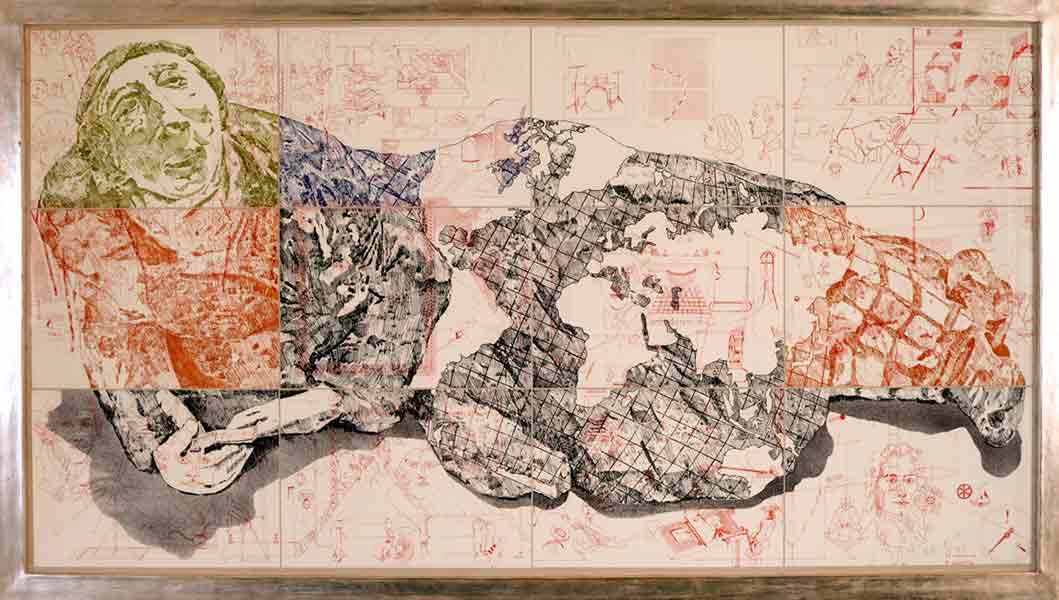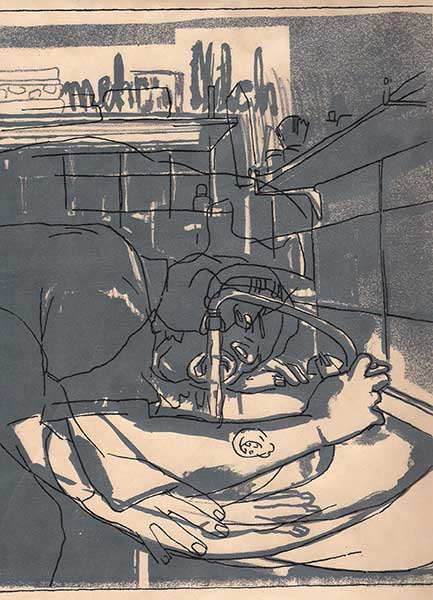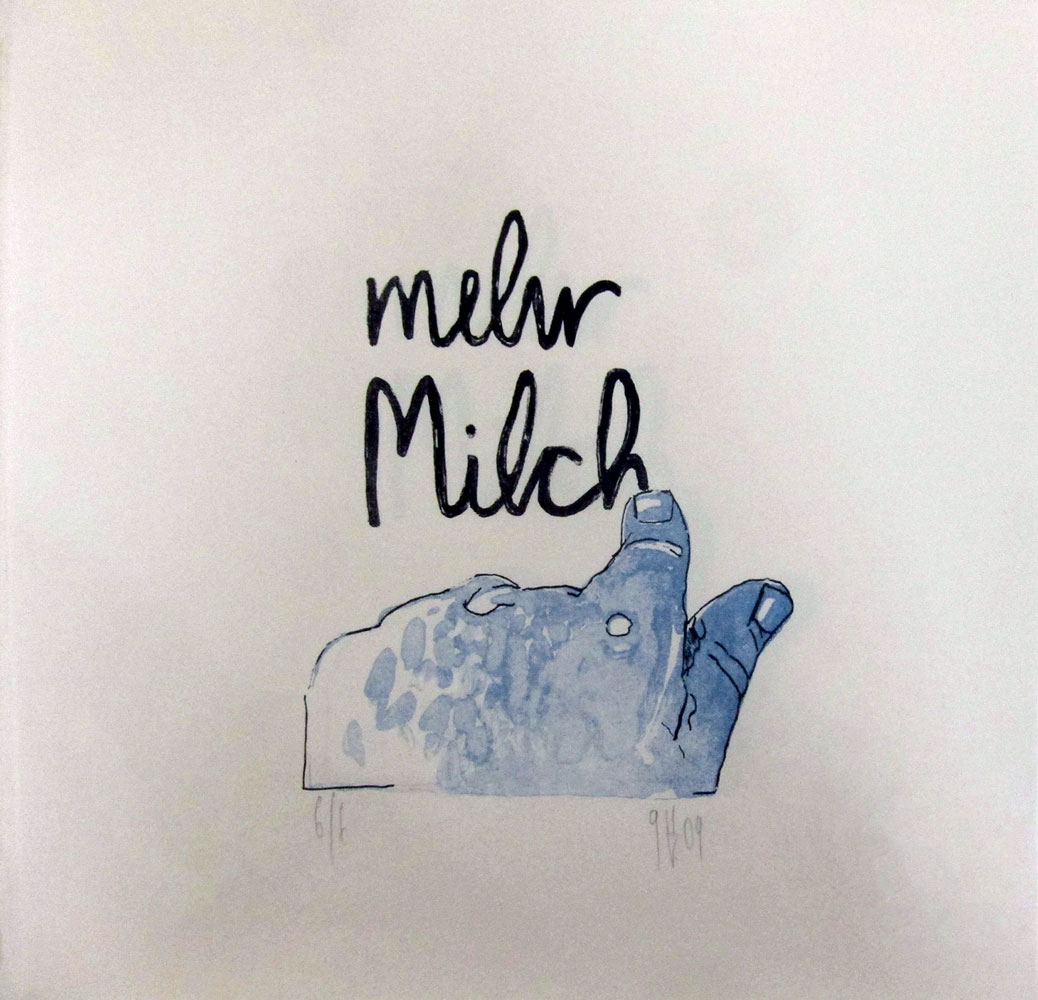Lithography is done using a 8 - 12 cm stone plate (calcareous shale from Solnhofen). It is stone with a particularly clean and fine-pored structure which absorbs oil and water equally well. To increase the absorption rate, the stone is cut, deacidified with alum and made more responsive. Subsequently, it can be used for artistic work – oily ink can be applied with any type of tool suited to the purpose – pens, brushes, art crayons etc. Drawing on stone is no different than drawing on paper. For halftone fades, the stone needs for be grained beforehand. The next stage after drawing is etching and gumming: the stone is first dusted with talcum powder to protect the drawing from smearing, then with powdered rosin to fix the drawing on the stone. Next, a syrupy solution consisting of diluted nitric acid, water and gum arabic is spread over the stone plate for the purpose of etching. The lithography ink is segregated and forms a chemical bond with the stone. The colour component of the ink is water-soluble, the oil-based component penetrates the stone pores, which are then sealed with gum arabic. After drying, the gummed stone is wiped with a turpentine-water solution until the drawing seems to vanish from the stone. In actual fact, the oil-based components in the stone need printers’ ink to make the drawing re-surface. The ink is applied on the humid stone with a leather roller. The greasy surfaces absorb the ink while the wet ones repel it. The drawing is visible again and can be printed onto paper. The stone needs to be re-moistened and re-inked for each print.
 |
 |
 |